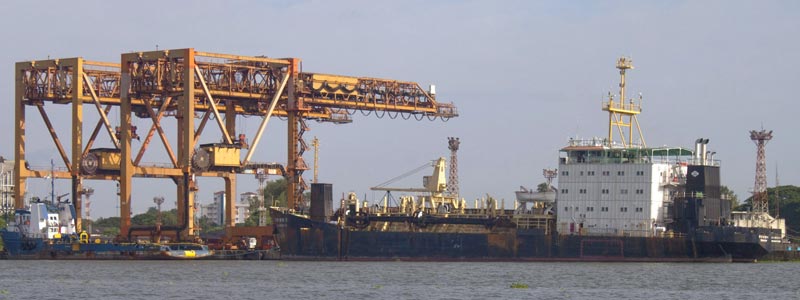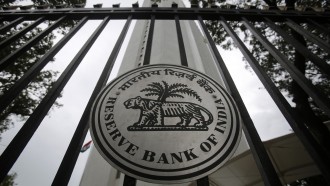
Indian government announces measures to reform shipping industry
The Dollar Business Bureau  The Indian government has taken a slew of measures to help revive India’s shipping industry and more reforms are likely to be announced soon to help speed up the transformation. India’s merchandise trade is heavily dependent on seaborne trade and ports. According to the Shipping Ministry, India’s shipping industry accounts for around 95% of India’s total merchandise trade by volume and 70% in terms of value. Meanwhile, total cargo traffic in India is forecast to grow to around 1,758 million metric tonnes (MMT) by 2017, up about 92% from around 911.5 MMT in 2012. However, complicated procedures, lack of connectivity and slow paperwork has prevented the shipping industry from transforming itself and meet growing needs. In India, the proportion of merchandise trade in GDP stands at only 42%, compared to 75% in Germany and 70% in EU. To help match the growing potential and boost exports, the Indian government has allowed FDI of up to 100% for construction and maintenance of ports. In addition, the government provides a 10-year tax holiday for companies that undertake port projects. So far, there are 34 projects on Public Private Partnership (PPP) mode in operation in major ports with an investment of Rs.11,524.42 crore, the Shipping Ministry said this week. The government has also asked the Reserve Bank of India (RBI) to consider repeat restructuring of shipyards as equivalent to first restructuring. This will prevent loans from turning into non-performing assets (NPAs) during adverse market conditions, the Shipping Ministry said. Earlier, with the introduction of life-time licenses, the Shipping Ministry had exempt shipping companies from renewing their licenses every year at the Directorate General of Shipping's office in Mumbai. Meanwhile, the Tariff Authority for Major Ports (TAMP) is expected to be disbanded which will help the 13 major ports in India to set market-driven rates, according to a Business Standard report. Last month, N.N. Kumar, Chairman, Jawaharlal Nehru Port Trust (JNPT) had said, "TAMP regime inhibited the growth of major ports and there is a need to free them from the regulatory regime for better price parity and create a level-playing field to compete with fast expanding non-major ports.” India is poorly placed among Asian peers when it comes to export costs. The shipping cost of export from India (about $1,200 per container) is almost double that from China (about $600 per container) and about three times that from Singapore (about $400 per container), according to ASSOCHAM estimates. To improve the competitiveness of Indian ports, the government has decided to provide cargo support to the Shipping industry. The Minister of State for Shipping, Pon. Radhakrishnan informed the Parliament yesterday that upgradation of software of the existing port system is also underway to achieve a seamless connectivity between different points.
The Indian government has taken a slew of measures to help revive India’s shipping industry and more reforms are likely to be announced soon to help speed up the transformation. India’s merchandise trade is heavily dependent on seaborne trade and ports. According to the Shipping Ministry, India’s shipping industry accounts for around 95% of India’s total merchandise trade by volume and 70% in terms of value. Meanwhile, total cargo traffic in India is forecast to grow to around 1,758 million metric tonnes (MMT) by 2017, up about 92% from around 911.5 MMT in 2012. However, complicated procedures, lack of connectivity and slow paperwork has prevented the shipping industry from transforming itself and meet growing needs. In India, the proportion of merchandise trade in GDP stands at only 42%, compared to 75% in Germany and 70% in EU. To help match the growing potential and boost exports, the Indian government has allowed FDI of up to 100% for construction and maintenance of ports. In addition, the government provides a 10-year tax holiday for companies that undertake port projects. So far, there are 34 projects on Public Private Partnership (PPP) mode in operation in major ports with an investment of Rs.11,524.42 crore, the Shipping Ministry said this week. The government has also asked the Reserve Bank of India (RBI) to consider repeat restructuring of shipyards as equivalent to first restructuring. This will prevent loans from turning into non-performing assets (NPAs) during adverse market conditions, the Shipping Ministry said. Earlier, with the introduction of life-time licenses, the Shipping Ministry had exempt shipping companies from renewing their licenses every year at the Directorate General of Shipping's office in Mumbai. Meanwhile, the Tariff Authority for Major Ports (TAMP) is expected to be disbanded which will help the 13 major ports in India to set market-driven rates, according to a Business Standard report. Last month, N.N. Kumar, Chairman, Jawaharlal Nehru Port Trust (JNPT) had said, "TAMP regime inhibited the growth of major ports and there is a need to free them from the regulatory regime for better price parity and create a level-playing field to compete with fast expanding non-major ports.” India is poorly placed among Asian peers when it comes to export costs. The shipping cost of export from India (about $1,200 per container) is almost double that from China (about $600 per container) and about three times that from Singapore (about $400 per container), according to ASSOCHAM estimates. To improve the competitiveness of Indian ports, the government has decided to provide cargo support to the Shipping industry. The Minister of State for Shipping, Pon. Radhakrishnan informed the Parliament yesterday that upgradation of software of the existing port system is also underway to achieve a seamless connectivity between different points.
This article was published on December 5, 2014.





 to success.
to success.